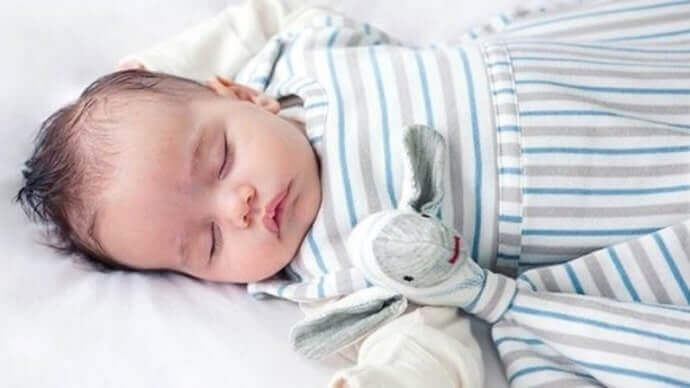If you’re on the hunt for the ultimate sleep solution, you’ve come to the right place. We’re about to tackle a hot topic: co-sleeping vs. crib sleeping. Yup, that’s right, we’re diving into the battle of the bedtime options. Whether you’re a fan of snuggling up with your baby or prefer giving them their own sleep kingdom, we’ve got all the juicy details you need to make the best sleep decision for your family. So grab your comfiest PJs, brew a cup of chamomile tea (or coffee, we won’t judge), and let’s embark on this sleep adventure together!
💡 Fascinating Fact: Did you know that co-sleeping has been practiced by various cultures for centuries? It’s true! 🌍 In many parts of the world, sharing a bed with the little ones is a common and cherished tradition that promotes bonding and emotional closeness.
Co-sleeping, also known as bed sharing, is the practice of having the baby sleep in close proximity to their parents during the night. It involves sharing the same bed or using a co-sleeping attachment that attaches to the side of the adult bed, creating a safe and separate sleep space for the baby. This arrangement allows for increased physical closeness and accessibility for both the baby and the parents.
Benefits of Co-Sleeping
Co-sleeping has gained popularity among parents due to its numerous benefits. Let’s explore some of these advantages:
- Enhanced bonding between parents and the baby: Co-sleeping provides an opportunity for increased physical contact, skin-to-skin contact, and emotional connection between parents and their little ones. The close proximity fosters a sense of security and strengthens the parent-child bond.
- Ease of breastfeeding during the night: For breastfeeding mothers, co-sleeping can make nighttime feedings more convenient. The close proximity allows for quick and easy access to the breast, promoting frequent and successful nursing sessions. This can help establish and maintain a healthy breastfeeding relationship.
- Improved emotional well-being for both parents and the baby: Co-sleeping promotes a sense of security and comfort for the baby, leading to better sleep patterns and reduced nighttime awakenings. Additionally, the proximity to the parents provides reassurance and a feeling of safety, contributing to emotional well-being for both the baby and the parents.
Considerations for Safe Co-Sleeping
While co-sleeping offers benefits, it’s crucial to prioritize safety to create a secure sleep environment for the baby. Here are some considerations for safe co-sleeping:
- Creating a safe sleep environment: Ensure that the bed and bedding are free from hazards such as excessive pillows, blankets, or stuffed animals that may pose a suffocation risk. Use a firm mattress and avoid gaps or spaces where the baby could get trapped.
- Positioning and bed-sharing guidelines: Position the baby on their back to reduce the risk of Sudden Infant Death Syndrome (SIDS). Place them beside the mother, as her natural instincts make her more aware of the baby’s presence. Avoid bed-sharing if either parent smokes, consumes alcohol, or uses medication that could impair their awareness.
Common Concerns and Myths about Co-Sleeping:
Co-sleeping often raises concerns and misconceptions among parents. Let’s address a couple of these common concerns:
- SIDS and safety precautions: While the risk of SIDS is a concern, implementing safety precautions significantly reduces it. Following safe sleep guidelines, such as providing a clear sleep surface and avoiding soft bedding, pillows, and overheating, can mitigate the risks associated with co-sleeping.
- Impact on parental sleep quality: Some worry that co-sleeping may disrupt parental sleep. However, when proper safety measures and sleep routines are established, co-sleeping can actually enhance sleep quality for both parents and the baby. The close proximity allows for quick and responsive caregiving, reducing the need for fully waking up during nighttime feedings or comforting the baby.
Pros and Cons of Co-Sleeping
| Pros | Cons |
|---|---|
| Enhanced bonding with the baby | Increased risk of accidents |
| Ease of breastfeeding | Potential disruption of parental sleep |
| Improved emotional well-being | Reduced adult intimacy |
Exploring Crib Sleeping
While co-sleeping offers its advantages, crib sleeping provides an alternative sleep option for babies. In this section, we will delve into crib sleeping, its benefits, and considerations for creating a safe sleep environment.
Crib sleeping refers to the practice of having the baby sleep in a separate crib or bassinet. It promotes independent sleeping and encourages the baby to develop their own sleep routines and self-soothing skills. Crib sleeping provides a dedicated sleep space for the baby, promoting a sense of autonomy and boundary-setting from an early age.
🌟 One of the amazing benefits of crib sleeping is that it allows babies to develop their independence and self-soothing skills. 🏠 As they grow older, having their own sleep space can empower them to feel confident and secure, paving the way for a smoother transition to independent sleeping habits.
Advantages of Crib Sleeping:
Crib sleeping offers several advantages for both the baby and the parents. Let’s explore some of these benefits:
- Promoting independence and self-reliance in children: Crib sleeping allows babies to develop their self-soothing abilities and establish healthy sleep habits. They learn to fall asleep and resettle on their own, fostering independence and self-reliance as they grow.
- Establishing healthy sleep routines and boundaries: With crib sleeping, parents have more control over creating consistent sleep routines and establishing clear boundaries. This helps babies understand the distinction between sleep time and awake time, promoting better overall sleep hygiene.
Creating a Safe Crib Sleeping Environment
To ensure the safety and comfort of the baby during crib sleeping, it’s essential to create a secure sleep environment. Consider the following:
- Choosing an appropriate crib and mattress: Select a crib that meets safety standards and has slats that are spaced correctly to prevent entrapment. The mattress should be firm and fit snugly within the crib, without any gaps around the edges.
- Setting up a conducive sleep space: Keep the crib free from excessive bedding, including pillows, blankets, and stuffed animals, to minimize the risk of suffocation or SIDS. Dress the baby in appropriate sleepwear to maintain a comfortable body temperature without the need for additional layers.
Common Concerns and Misconceptions about Crib Sleeping
There are a few concerns and misconceptions surrounding crib sleeping that we should address:
- Emotional well-being and parent-child attachment: Some parents worry that crib sleeping may hinder the emotional bond between them and their baby. However, research suggests that a secure attachment can be fostered through attentive and responsive caregiving during waking hours, regardless of the sleep arrangement.
- Nurturing independence while maintaining a sense of security: Parents may wonder how crib sleeping can promote independence without compromising the baby’s sense of security. By implementing comforting bedtime routines, offering reassurance through check-ins, and responding promptly to the baby’s needs, parents can strike a balance between promoting independence and providing a secure environment.
Pros and Cons of Crib Sleeping
| Pros | Cons |
|---|---|
| Promotes independence | Potential difficulty in breastfeeding |
| Establishes healthy sleep routines | Initial adjustment period for the baby |
| Provides a dedicated sleep space | Less immediate parental proximity at night |
🔍 Safety is a top priority when it comes to sleep arrangements. ⚠️ While co-sleeping can provide wonderful moments of closeness, it’s important to follow safe co-sleeping guidelines to reduce the risk of accidents and ensure a secure sleep environment for both parents and babies. We’ll be sharing some essential tips to keep everyone snoozing peacefully and safely.
Co-Sleeping vs. Crib Sleeping: Factors to Consider
Choosing between co-sleeping and crib sleeping requires careful consideration of various factors. In this section, we will explore the age and developmental stage of the baby, cultural and personal preferences, breastfeeding considerations, and safety concerns that influence the sleep decision-making process.
Age and Developmental Stage of the Baby
The age and developmental stage of the baby play a significant role in determining the most suitable sleep option. Consider the following:
- Newborns and early infancy: Newborns and very young infants often benefit from the close proximity and frequent nighttime feedings associated with co-sleeping. The physical closeness can promote bonding and facilitate breastfeeding. However, it is crucial to implement safe co-sleeping practices to ensure the baby’s safety.
- Transitioning to toddlerhood: As babies grow older and become more active, they may benefit from the independence and boundaries offered by crib sleeping. Toddlers tend to have more defined sleep patterns and may thrive in their own sleep space, fostering a sense of autonomy and self-reliance.
Cultural and Personal Preferences
Cultural influences and personal preferences also shape the decision between co-sleeping and crib sleeping. Consider the following:
- Cultural influences on sleep practices: Cultural norms and traditions related to sleep practices vary widely. Some cultures have a long-standing tradition of co-sleeping, while others prioritize independent sleep arrangements. It’s essential to understand and respect the cultural context while considering the sleep options.
- Parental comfort and sleep preferences: Parental comfort and individual sleep preferences should also be taken into account. Some parents may find comfort in having their baby close by during sleep, while others may prioritize having their own sleep space for improved rest. It is crucial to consider what works best for the entire family unit.
Breastfeeding and Sleep Arrangements
Breastfeeding can significantly influence the choice between co-sleeping and crib sleeping. Consider the following:
- Co-sleeping advantages for breastfeeding: Co-sleeping can facilitate easier nighttime breastfeeding. The proximity allows for convenient access to the breast, promoting frequent and responsive nursing sessions, which can enhance milk supply and breastfeeding success.
- Strategies for successful crib sleeping while breastfeeding: It is possible to incorporate breastfeeding while practicing crib sleeping. Placing the crib in close proximity to the parental bed or having a bedside bassinet can make nighttime breastfeeding more manageable, ensuring both the baby’s needs and parental rest are met.
You may also find these articles interesting:
Safety Considerations
Safety is of utmost importance when making sleep arrangements for your baby. Consider the following safety considerations:
- Reducing the risk of SIDS and suffocation: Both co-sleeping and crib sleeping carry their own risks related to Sudden Infant Death Syndrome (SIDS) and suffocation. By following safe sleep guidelines, such as creating a safe sleep environment, placing the baby on their back to sleep, and avoiding soft bedding, the risks can be minimized.
- Monitoring and responding to the baby’s needs during sleep: Regardless of the sleep arrangement, it is essential to be attuned to the baby’s cues and promptly respond to their needs. This includes regular check-ins, ensuring the baby is comfortable, and providing necessary comfort measures while maintaining a safe sleep environment.
Conclusion
When deciding between co-sleeping and crib sleeping, it’s crucial to consider the age and developmental stage of the baby, cultural and personal preferences, breastfeeding considerations, and safety concerns. Understanding the advantages and considerations of each option allows parents to make an informed decision that aligns with their family’s needs and values.
It’s important to remember that there is no one-size-fits-all solution when it comes to sleep arrangements for babies. Every family is unique, and what works for one may not work for another. Ultimately, the goal is to create a safe and nurturing sleep environment that promotes the well-being of both the baby and the parents.
By considering factors such as the age and developmental stage of the baby, cultural and personal preferences, breastfeeding dynamics, and safety considerations, parents can weigh the pros and cons of co-sleeping and crib sleeping. Some families may choose to start with co-sleeping during the early months and transition to crib sleeping as the baby grows, while others may opt for crib sleeping from the beginning.
It is crucial to remain adaptable and open to adjusting sleep arrangements as the baby’s needs evolve. Regularly reassessing the sleep environment and making necessary modifications ensures that the chosen sleep option continues to meet the changing needs of the baby and the family.
Remember, the most important aspect is to prioritize the safety, well-being, and healthy development of your baby. Consult with healthcare professionals, seek support from experienced parents, and trust your instincts as you make the best sleep choice for your family.
By considering the unique needs of your baby, your cultural and personal preferences, and prioritizing safety, you can create a sleep environment that fosters a restful and nurturing experience for both you and your little one.
As you navigate the journey of parenting and sleep arrangements, remember that every family is different, and there is no right or wrong answer. What matters most is finding a sleep arrangement that promotes the well-being and happiness of your baby and your family as a whole.
Sleep is a precious commodity for both babies and parents, and by understanding the factors to consider when deciding between co-sleeping and crib sleeping, you can make an informed choice that supports healthy sleep habits and fosters a loving and secure environment for your little one.
Whether you choose co-sleeping, crib sleeping, or a combination of both, cherish the moments spent with your baby during these early years. The bond you form and the love you share will undoubtedly contribute to their overall well-being and set the foundation for a lifetime of positive sleep habits and emotional security.










